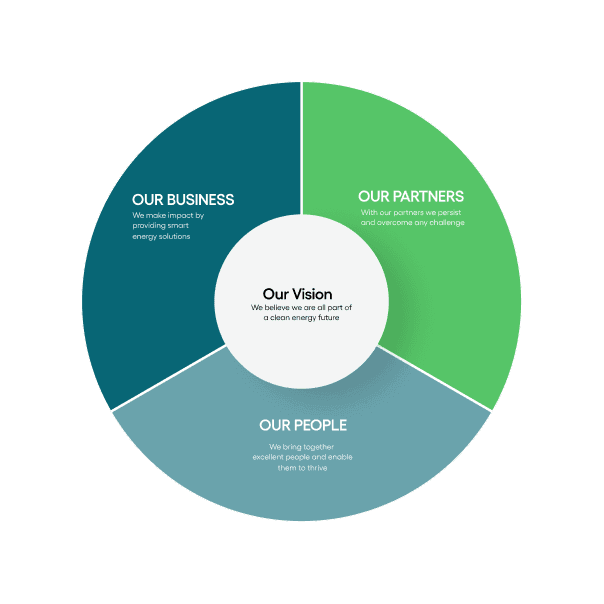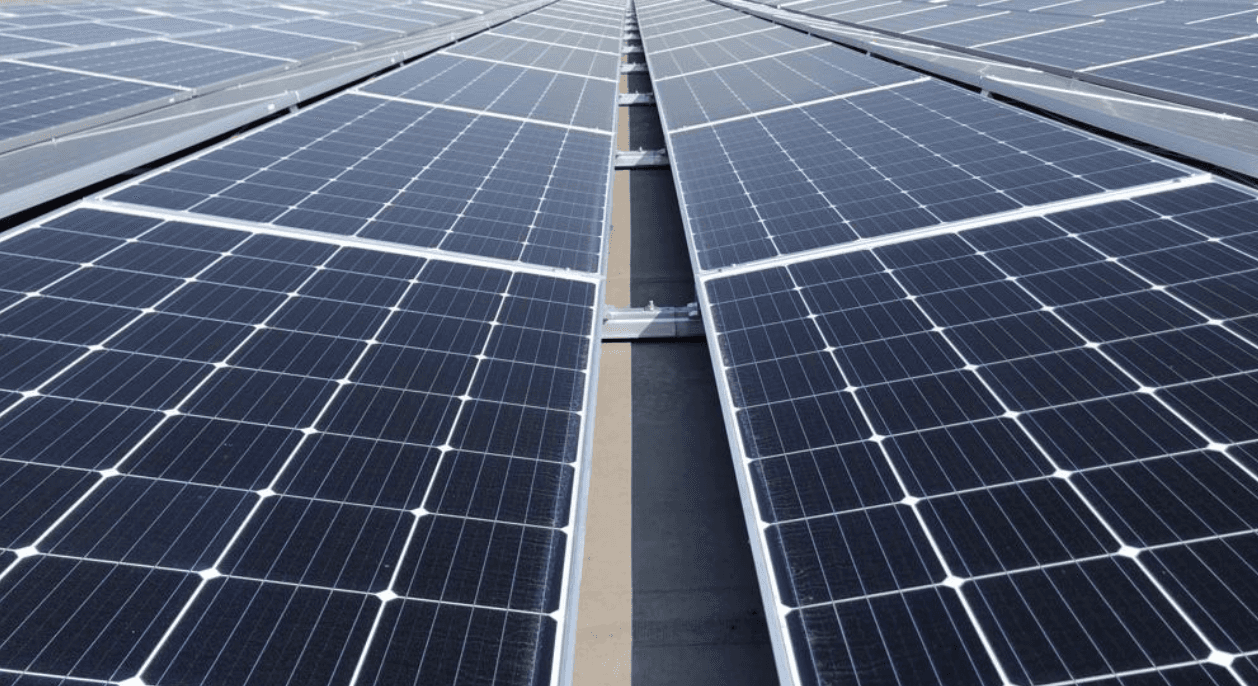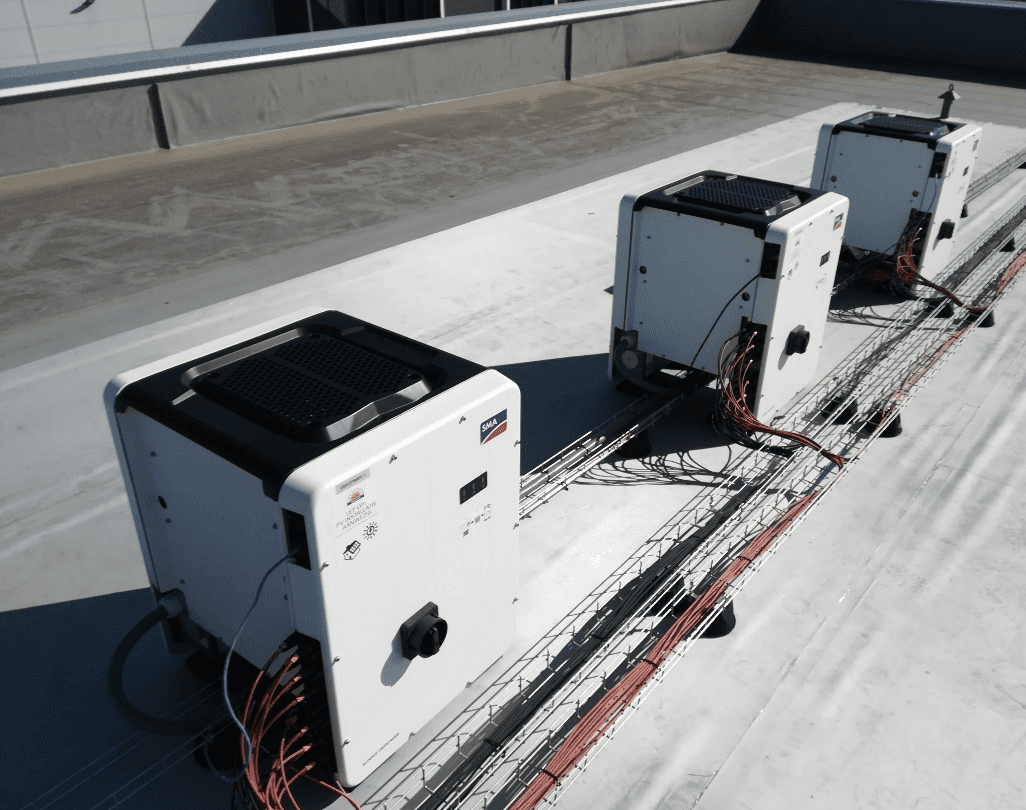
Sunrock’s Investments B.V. is a privately held subsidiary of COFRA Holding and is active in several European countries, with headquarters located in Amsterdam. Sunrock is the largest developer of solar roof projects in the Netherlands.
We provide one-stop renewable energy solutions for a diverse range of clients, including commercial real estate developers and users, public institutions, and the healthcare sector.
Sunrock's focus on smart energy solutions, including the development of solar infrastructure, energy storage systems, and power purchasing agreements, demonstrates our commitment to delivering innovative and sustainable solutions to its clients.
A clean energy future
Sunrock is a forward-thinking and impact-driven company that is well-positioned to make a significant contribution to the transition towards a more sustainable future.
We are driven by a sense of responsibility to contribute actively to the realization of a sustainable energy system by promoting a circular economy and developing smart energy.

Sunrock offers
smart energy solutions
Enable businesses to produce their own (solar) energy
Lease or rent construction possible
Sunrock arranges everything
From PV construction to energy distribution
Create grid independence
Help companies realize their sustainability goals
Makes the property or business more sustainable
Creates an energy strategy that is future proof
Constant optimization of system and sources by Sunrock

Core countries
Active development
Clients
We have a wide variety of clients, with a focus on logistic real estate. We work together with developers, institutional investors, real estate owners and advisors as well as the tenants of these locations. In addition to that we work closely with Europe’s largest energy users, supporting them in their ambitions to transition to clean energy.
We understand their needs, perform an assessment of their assets/projects and make a proposal for working together as long-term partners on the topic of green energy production and usage. By providing the users of the building with locally produced clean energy, we help reduce their carbon footprint and thereby support their ESG goals and ambitions.
We continue to be the preferred partner of our clients through our dedication to corporate social and environmental responsibility, and by raising the bar for ourselves in the field of ESG.
**Based solely on projects that reached provisional acceptance during 2022 and were developed by Sunrock. Projects managed by Sunrock (developed by other entities) are not included.
530,892 modules**
1,405 inverters**
Sunrock’s operations 2022*
Total number of active rooftop projects as of December 2022 (196)
Total number of active ground mounted projects as of December 2022 (5)
Total number of active floating projects as of December 2022 (2)
Solar projects are an effective way to generate electricity in a sustainable and environmentally friendly way. With the right components, design, and implementation, a solar project can provide a reliable source of energy for many years to come.
Power panels
A solar project is composed of photovoltaic (PV) modules, inverters, mounting structures, connectors, a grid connection, and numerous cables. The power of a PV module is measured in Watt peak [Wp]. These modules are connected in series to form strings, which typically comprise 18 or 20 modules. For large parks, this can result in many strings, which is why a combiner box is sometimes used. This box combines the cables from different strings into a single large cable.
DC and AC
The Direct Current (DC) power of a field is the power from the DC voltage side and is equal to the total power of all modules combined. For example, a 1 MW solar park means that there is 1 MWp of PV modules on the roof. This total DC power flows to the inverters via power cables, where it is converted from direct current (DC) to alternating current (AC). AC is the type of power that eventually flows into the grid and out of the outlet. AC power is determined by the total capacity of the inverters.
Delivery to the grid
The generating electricity is supplied to the grid via the transformer. The transformers steps up the voltage of the electricity flowing from the inverter before it is transferred to the grid. This is necessary because the grid requires higher voltage levels than those produced by the PV modules. The transformer also ensures that the electricity is in phase with the grid, to prevent it from causing damage to the grid or safety hazards.
Solar project overview
PV modules with ballast and mounting structure
East-west arrangement of multiple string panels.
Cables from the different
strings
We take care of Sunrock’s installed assets to ensure that we meet our long-term commitment to all parties involved while realising and optimising the value of our asset portfolio.
Improved performance
Sunrock’s Asset Management team is responsible for the performance of solar assets (good availability and production) as well as safe operations. We work closely with stakeholders (property owners, tenants, contractors, energy off takers) to ensure business-cases are met and opportunities for improvement are implemented. We focus on the performance of our portfolio by remote monitoring and liaising with external contractors to effectively resolve issues. Asset managers interact with the tenants of the various locations and are the first contact for health, safety and environment related queries. Additionally, we ensure that administrative agreements are met on time (insurances, bank guarantees etc.). In addition to these operational tasks, we work on improving our business, tools and processes. Asset managers actively participate in the ESG working groups.
ESG in 2022
Through asset management, Sunrock ensures that the predicted renewable electricity production from the asset is actually produced during the operational lifetime. In 2022, Sunrock contracted an Operations & Maintenance party, who is a certified service partner of the largest inverter manufacturer in the portfolio. This partner is skilled in doing repairs on site or replacing components, rather than swapping an entire inverter device. The ESG benefits include fewer installations of newly produced devices and the reduction of CO2 footprint, linked to the transport of damaged inverters to be repaired off-site.
2023 and beyond
For 2023 and beyond, there are several opportunities for improving asset management ESG practices that are being explored. Enhancing the circular use of components used on our assets is an important part of our vision for the upcoming years. We strongly stimulate the refurbishment and repairs of components by making this a requirement in the Operations and Maintenance contracts. Extra relevant since many product warranties will expire in the next 2-3 years. Also, we promote the use of electric vehicles by our contractors, thereby reducing their carbon footprint from traveling to our sites for maintenance. Our assets are still relatively new, but once End-of-Life comes closer, we will add decision criteria to continue the operations as long as possible or to minimise the environmental impact of decommissioning.

Number of Employees (head count)
0
50
25
100
75
125
Employee data
31 december 2021
31 december 2022
Employment arrangement
Interim & internship (4,8%)
Temporary
contract (22,9%)
Permanent
contract (72,3%)
Male
Female
age 25-34
age 35-44
age 45+
0
4
2
6
Churn rate
Total gender ratio
Leadership gender
ratio
Board gender
ratio
0
50
25
100
75
Gender diversity % (based on 2022 survey)
Male
Female
Other
18-24
25-34
35-44
45-54
>54
0
40
20
60
Age diversity in %
All sunrockers
Leadership
Ethnic/cultural diversity in %
African/Asian/
American/ Oceania (9,1%)
Non-Dutch/non-German European (9,1%)
Suriname & Dutch
Caribbean (2,0%)
German (13,1%)
Dutch (66,7%)






























